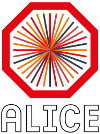To produce and study physics container files use the program SPD Reference Data Displayer on the DAQ machines.
Go here to find more information.
Physics runs
The figure below shows the structure of the SPDphys container classes. They all thave the prefix AliITSOnline. The SPDphys class is the interface to the underlying structure of TObject derived classes.

The AliITSOnlineSPDphys object is the user interface for reading and writing "phys" data for one router (equipment). It is always connected to a Root file, where it reads and writes all relevant information, when it is needed.
The AliITSOnlineSPDphysInfo object carries all general information about the physics run(s), e.g. run numbers used, equipment number, and number of events.
The AliITSOnlineSPDHitArray object contains the number of hits for each pixel in one half stave. (Basically, this is an array of 81920 values.)
Standalone calibration runs
The figure below shows the structure of the SPDscan container classes. They all thave the prefix AliITSOnline. The classes in blue are the interfaces to the underlying structure of TObject derived classes.

The AliITSOnlineSPDscan object is the user interface for reading and writing scan data for one router (equipment). It is always connected to a Root file, where it reads and writes all relevant information successively, when it is needed. This scheme prevents keeping huge amounts of data in memory. (It holds pointers to 6 HitArray and 6 HitEvent objects for each scan step. It also holds a pointer to an SPDscanInfo object.)
The AliITSOnlineSPDscanInfo object carries all general information about the scan, e.g. run number, scan type, and router number.
The AliITSOnlineSPDHitArray object contains the number of hits for each pixel in one half stave. (Basically, this is an array of 81920 values.)
The AliITSOnlineSPDHitEvent object contains the number of events that have at least one hit for each chip, individually as well as totally, in one half stave. (Basically, this is an array of 11 values.)
The AliITSOnlineSPDscan class has a couple of derived classes. The type of information (scan) needed, determines the proper one to use. In the table below their functionalities are listed.
| AliITSOnlineSPDscan |
Base class containing the data from one router (equipment). Can store data from several S-curve steps. Access: |
| AliITSOnlineSPDscanSingle |
This class derives from SPDscan and is an SPDscan with only one S-curve step. Access: Example: |
| AliITSOnlineSPDscanMultiple |
This class also derives from SPDscan and is an SPDscan with some further data. Access: Example: |
| AliITSOnlineSPDscanMeanTh |
This class derives from SPDscanMultiple and contains some further data. Access: Example: |
To analyze the scans, download a small framework (which can be built standalone from AliRoot) for analyzing scans here. It should be quite self explanatory. The main program is inside analyzeScan.cxx. Currently, this example opens a reference data file produced from a uiniformity matrix scan. It just loops through the pixels and produces some output on the number of hits.
